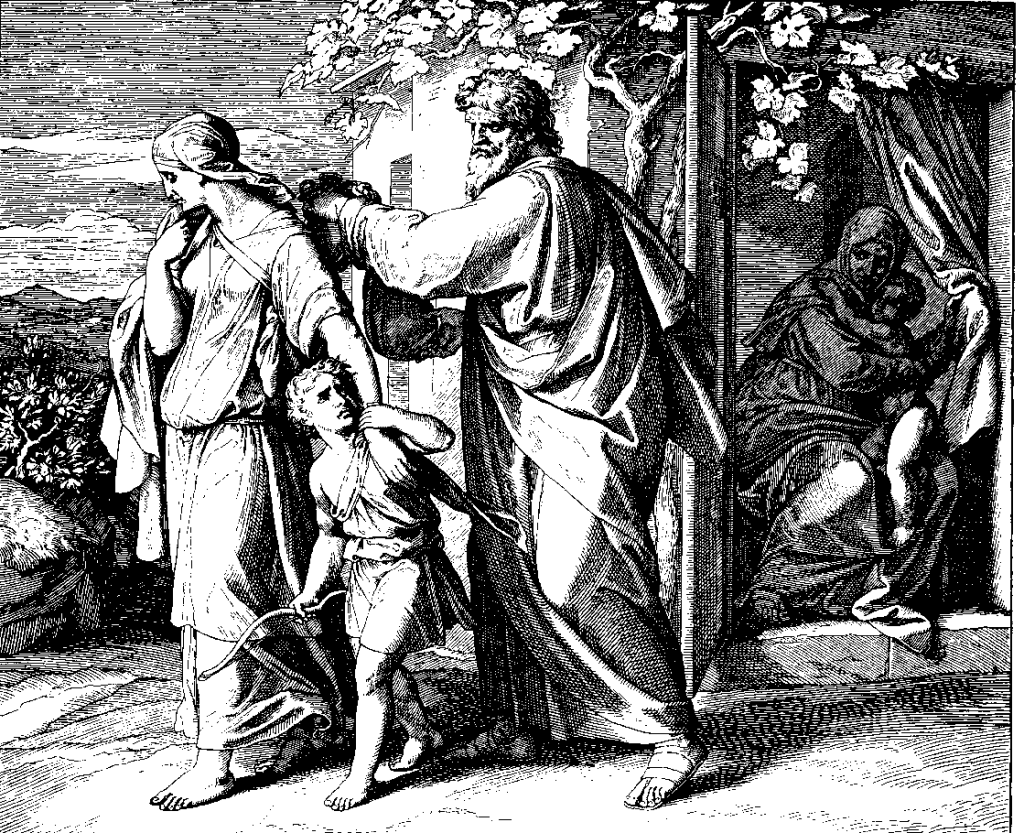Like most Jewish families worldwide, last Shabbat, the conversation revolved around the situation in the Middle East and the war in Gaza. The question was, what is the end game? How will this war end after IDF destroys Hamas? The United States, no doubt, will push for the Two-State “solution.” But will such a solution be viable? My wife, Leah, ’שתחי, chimed in, “The two-state solution is not viable because the exclusion principle forbids it.” I immediately understood what she meant. It was a deep insight that captured the very essence of the problem. Leah was also trained as a physicist (in fact, we met at a physics conference). Although she specialized in biophysics, she is familiar with quantum mechanics and spoke to me in the language we both understood. What is the exclusion principle, and why is it relevant?
The Pauli Exclusion Principle

In 1925, the Jewish-Austrian physicist Wolfgang Pauli formulated his Exclusion Principle. The Pauli Exclusion Principle, as it is now known, is a fundamental concept in quantum mechanics that governs the behavior of particles of matter, such as electrons, protons, and neutrons (that all have half-integer spins), collectively called fermions.[1]
According to the Pauli Exclusion Principle, no two identical fermions in a quantum system can simultaneously occupy the same quantum state. Particles are described by quantum states, which encompass various properties like energy, momentum, spin, and position. Quantum states are specified by a set of quantum numbers.
The Pauli Exclusion Principle states that no two fermions within a given quantum system can have the same set of quantum numbers. This means they cannot occupy the same quantum state simultaneously. In other words, if one fermion is in a particular quantum state, another fermion with identical quantum numbers cannot occupy that state.
The most common application of the Pauli Exclusion Principle is in the context of electron spin. Electrons can have two possible spin states: “spin-up” (often denoted as ↑ or +1/2) and “spin-down” (often denoted as ↓ or -1/2). Since electrons are fermions, the principle dictates that no two electrons in an atom can have the same set of quantum numbers, including their spin states.
The Pauli Exclusion Principle plays a fundamental role in determining the electronic structure of atoms. It leads to the filling of electron shells and the arrangement of electrons in orbitals within atoms. This is why electrons fill up shells and subshells in a particular order. It describes the periodic table. As atomic number increases, electrons fill higher energy shells, leading to the structure of the periodic table. This principle is responsible for the stability and chemical properties of matter.
Excluding electrons from occupying the same quantum state ensures that matter is stable. If electrons with the same quantum numbers were allowed to occupy the same state, all matter would collapse due to the electromagnetic repulsion between like-charged electrons. This principle also accounts for the rigidity of matter. Electrons in filled shells repel each other due to their identical natures, giving matter its solid structure. It allows for white dwarf stars to exist. The degenerate electron gas pressure, a result of the Pauli exclusion principle, is what supports these dense stars against gravitational collapse.
The Pauli Exclusion Principle is a consequence of the principles of quantum mechanics, particularly the wave function description of particles. It underlies the spin-statistics theorem, connecting a particle’s spin to its statistical behavior. It reflects the inherent quantum nature of particles and is essential for understanding the behavior of matter at the atomic and subatomic levels.
In summary, the Pauli Exclusion Principle is a foundational concept in quantum mechanics that prohibits identical fermions from occupying the same quantum state. This principle has profound implications for the behavior of electrons in atoms, the structure of the periodic table, and the stability of matter as we know it.
The Sarah’s Exclusion Principle
About four thousand years before Pauli, Jewish matriarch Sarah formulated a similar exclusion principle—her son Isaac and Abraham’s son Ishmael would not live together—and we read it on that very Shabbat, from the Torah portion Vayera! The Book of Geneses tells this story:
Sarah saw the son whom Hagar the Egyptian had borne to Abraham playing. She said to Abraham, “Cast out that slave-woman and her son, for the son of that slave shall not share in the inheritance with my son Isaac.” The matter distressed Abraham greatly, for it concerned a son of his. But God said to Abraham, “Do not be distressed over the boy or your slave; whatever Sarah tells you, do as she says, for it is through Isaac that offspring shall be continued for you. As for the son of the slave-woman, I will make a nation of him, too, for he is your seed.” Early next morning Abraham took some bread and a skin of water, and gave them to Hagar. He placed them over her shoulder, together with the child, and sent her away. And she wandered about in the wilderness of Beer-sheba.
Genesis 21:9-14

The midrash states that all patriarchs and matriarchs were prophets.[2] Indeed, G‑d tells Abraham to listen to Sarah— “whatever Sarah tells you, do as she says”—presumably because she was an even greater prophet than Abraham. Sarah’s other name was Iscah—a “seer” because she “envisioned” (shesokha) [hidden matters] by means of divine inspiration.[3] She Sarah saw that Isaac and Ishmael would not share the same land. She insisted that Ishmael be sent away so that Isaac could inherit Abraham’s blessings—G‑d’s promise of the land of Canaan. Thus, Sarah formulated the exclusion principle, as it were, forbidding Ishmael from occupying the Promised Land. G‑d concurs with Sarah. He reassures Abraham that He will also make a nation—a different nation to live in a different land—out of Ishmael because he is Abraham’s offspring. As a result, Abraham sends Hagar and Ishmael away with provisions, and they settle in the Desert of Beersheba.
The Sages state that our matriarchs were the real builders of the Jewish nations and saw further than our patriarchs. Generally, Jewish women, who continue to build the Jewish nation, carrying the torch of the matriarchs, have the insight that men often lack. Perhaps this is why my wife understood what most Israeli politicians struggle to grasp—there can never be a Palestinian state in the biblical borders of Israel. Had they understood it, many tragic mistakes—including the misguided Camp David accord, the failed Oslo agreement, and the disastrous disengagement from Gaza, as well as the present war—could have been avoided.
We are all for peaceful co-existence with our cousins Ishmaelim—Palestinians. We are all for the right of Palestinian people to self-determination and a Palestinian state—on the Arab lands, that is. This is the only way to achieve stable peace. So states the exclusion principle.
[1] Fermions are a class of fundamental particles that obey the Pauli Exclusion Principle. Examples of fermions include electrons, protons, neutrons, quarks, and neutrinos. These particles have half-integer spins (e.g., ±1/2, ±3/2) and are the building blocks of matter. Bosons, such as photons, have integer spin.
[2] Seder Olam 21.
[3] Talmud, Sanhedrin 69b:13; Megilah 14a.
